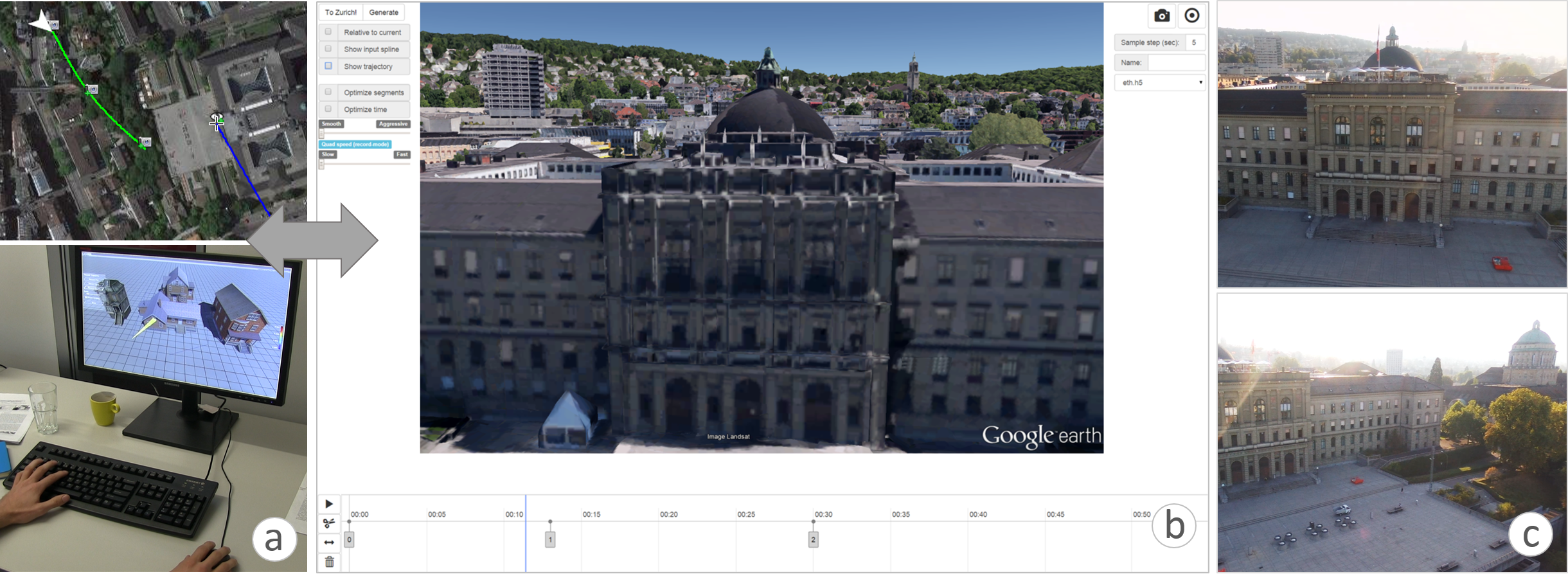
This paper investigates how to effectively support non-expert users in the creation of aerial video shots, comparing (A) the state-of-the-art and (B) WYFIWYG, a tool inspired by expert workflows. (C) The resulting plans can be flown on real robots.
Abstract
Tools for quadrotor trajectory design have enabled single videographers to create complex aerial video shots that previously required dedicated hardware and several operators. We build on this prior work by studying film-maker’s working practices which informed a system design that brings expert workflows closer to end-users. For this purpose, we propose WYFIWYG, a new quadrotor camera tool which (i) allows to design a video solely via specifying its frames, (ii) encourages the exploration of the scene prior to filming and (iii) allows to continuously frame a camera target according to compositional intentions. Furthermore, we propose extensions to an existing algorithm, generating more intuitive angular camera motions and producing spatially and temporally smooth trajectories. Finally, we conduct a user study where we evaluate how end-users work with current videography tools. We conclude by summarizing the findings of work as implications for the design of UIs and algorithms of quadrotor camera tools.
Accompanying Video
Gallery

Visual results of our method. Top: snapshots from planning tool. Bottom: corresponding results from real quadrotor.
